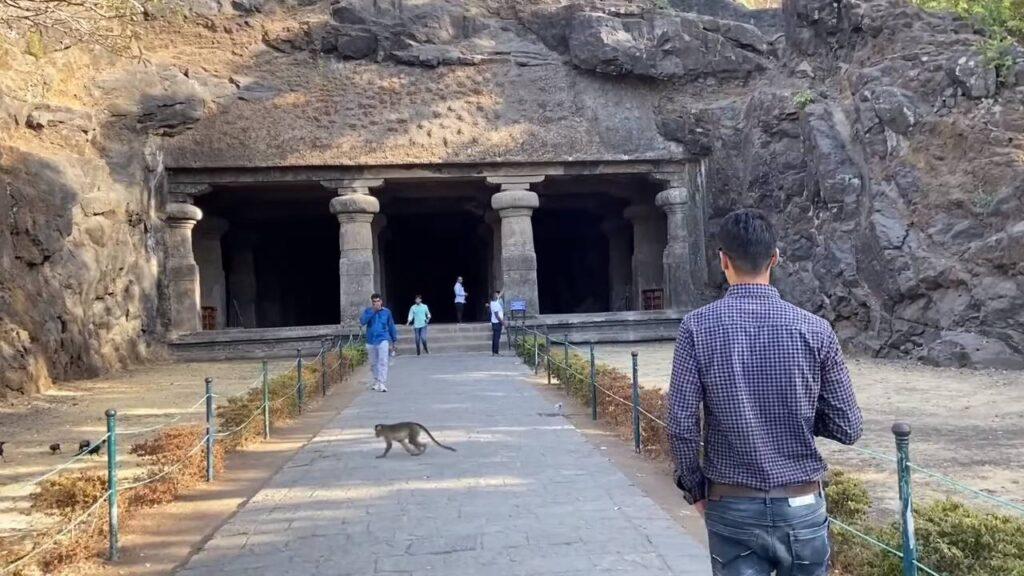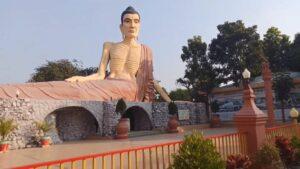The Elephanta Caves are a collection of rock-cut temples dedicated to the Hindu god Shiva, located on an island near Mumbai.
One of the most fascinating places to visit in Mumbai is the Elephanta Caves, a UNESCO World Heritage Site that showcases the ancient rock-cut architecture and art of India. The Elephanta Caves are located on an island in the Arabian Sea, about 10 km east of Mumbai.
The Elephanta Caves consist of five Hindu caves and two Buddhist caves that date back to between the 5th and 9th centuries. The Hindu caves are dedicated to the god Shiva, and feature some of the most impressive sculptures and reliefs of Shiva in various forms and manifestations. The most iconic sculpture is the Trimurti, a colossal three-headed image of Shiva that represents his aspects as the Creator, the Preserver, and the Destroyer.
You May Read
The Buddhist caves are smaller and simpler than the Hindu caves, and contain some stupa mounds, water tanks, and sculptures of Buddha. The Buddhist caves reflect the influence of Buddhism on the island before the rise of Hinduism.
The Elephanta Caves are a remarkable example of Indian art and culture, and a testimony to the religious syncretism and diversity that existed in ancient India. They are also a source of inspiration and admiration for visitors from all over the world. The Elephanta Caves are a must-see attraction for anyone who wants to experience the history and heritage of Mumbai.
Elephanta Caves History
The Elephanta Caves have a rich history that dates back to between the 5th and 9th centuries AD. They consist of five Hindu caves and two Buddhist caves that reflect the religious syncretism and diversity that existed in ancient India.
The Hindu caves are dedicated to the god Shiva, and feature some of the most impressive sculptures and reliefs of Shiva in various forms and manifestations. The most iconic sculpture is the Trimurti, a colossal three-headed image of Shiva that represents his aspects as the Creator, the Preserver, and the Destroyer.
The Buddhist caves are smaller and simpler than the Hindu caves, and contain some stupa mounds, water tanks, and sculptures of Buddha. The Buddhist caves reflect the influence of Buddhism on the island before the rise of Hinduism.
Elephanta Caves Opening & Closing Time
The Elephanta Caves are open from 9:30 a.m. to 5:30 p.m. every day except on Mondays.
Elephanta Caves Ticket Price
The entry fee is Rs. 40 for Indians and Rs. 600 for foreigners. There is no entry fee for children below 15 years. There is also a fee of Rs. 10 for village entry, Rs. 10 for toy train ride, Rs. 25 for video camera, and no fee for still camera.
Who Built the Elephanta Caves?
The exact identity and date of the builders of the caves are not known, but there are various theories and legends about them. The Elephanta Caves temple was excavated in the 8th century by the Rashtrakuta kings, who ruled the region between AD 757 and 973. The caves were built by the Chalukya dynasty in the 7th century or the Rashtrakuta dynasty in the 8th or 9th century. The caves are a remarkable example of Indian art and culture, and a UNESCO World Heritage Site.
The Elephanta Caves are a remarkable example of Indian art and culture, and a testimony to the religious syncretism and diversity that existed in ancient India. They are also a source of inspiration and admiration for visitors from all over the world. The Elephanta Caves are a must-see attraction for anyone who wants to experience the history and heritage of Mumbai.







